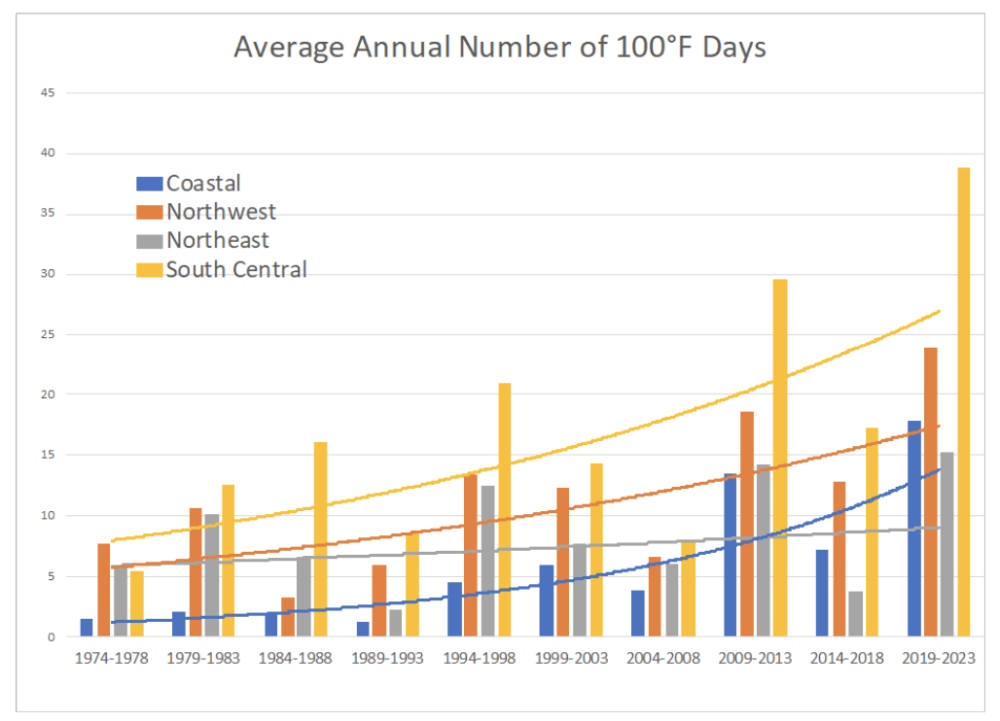Rising temperatures will also exacerbate severe weather conditions from droughts to strong rainstorms and flooding.
State climatologist John Nielsen-Gammon used historic weather data to forecast climate trends through 2036—the year Texas turns 200—and beyond. The April 22 report is an update to information released in 2021.
What you need to know
In 2036, average temperatures in Texas are expected to be 1.8 degrees Fahrenheit warmer than averages from 1991-2020, researchers predict.
Last year was Texas’ hottest on record, according to the National Oceanic and Atmospheric Administration. Temperatures in Big Bend National Park reached 119 degrees Fahrenheit on June 23.
“Extreme heat in recent decades has become more frequent and more severe, while extreme cold has become less frequent and less severe overall,” the report reads.
Triple-digit days will likely be four times more common in 2036 than they were in the 1970s and ‘80s.

Most large wildfires typically occur in West Texas, but the report said fires will likely become more common in East Texas. The state’s largest wildfire, the Smokehouse Creek Fire, burned over 1 million acres in the Texas Panhandle and western Oklahoma in late February and early March.
More details
Heavy rain will also become more common as temperatures increase, researchers found. The report said about 4% more rain falls for every degree of warming, although the risk of extreme rainfall varies across Texas. Flooding is expected to increase in urban areas as rainfall becomes more severe, while river flooding will stay roughly the same, according to the report.
“The long-term trend of precipitation in Texas has been positive,” researchers wrote. “Over the past century, parts of central and eastern Texas have experienced precipitation increases of 15% or more, while in much of the western part of the state the long-term trend is flat or even slightly downward.”
Snowstorms are expected to remain infrequent in Texas, while researchers said declines in freezing rain were “tentative.”
Also of note
The demand for electricity is expected to increase by 74% through 2050 as Texas’ population grows and temperatures rise, according to public policy nonprofit Texas 2036.
“We can attribute this surge to multiple factors, including the state's economic growth, an increase in air-conditioning usage due to more hot-weather days, the expansion of data centers, the proliferation of electric vehicles, and the broader adoption of electric appliances,” the think tank’s energy dashboard reads. “To accommodate this escalating demand, Texas will need to attract additional electric generation capacity.”
Texas 2036 helped fund the climatologist’s report.





